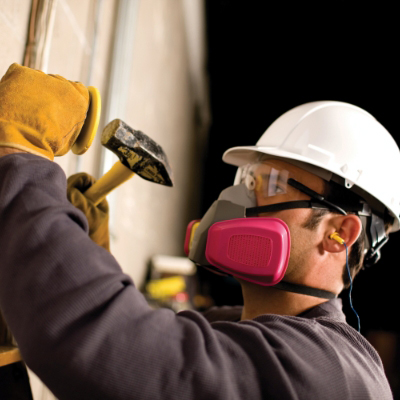What Is a Trade School?

Last updated August 12, 2024
There will be more than 4 million open jobs in the skilled trades by 2028, according to the Bureau of Labor Statistics. High demand for trained trade workers can lead to higher pay, less competition and more options for career advancement.
Trade school, also called vocational school, offers a first step to launching a career in skilled trades. This guide reviews the definition and advantages of trade school and the next steps after completing a trades program.
Table of Contents
What Is a Trade School?
Advantages of Trade Schools
What Happens After Trade School?
More Tools. More Products. More Perks.
What Is a Trade School?

Careers in skilled trades are expected to increase in demand, especially with older trades Pros leaving the workplace in upcoming years. High school graduates or experienced workers seeking a career change may want to consider attending trade or vocational school.
Vocational school, trade school and technical college are closely related terms for similar types of education. Some schools may use the same terms in different ways, so make sure that your chosen program provides the type of training you want.
All three terms describe schools that focus on preparing their graduates for entry-level trades jobs. They have little to no focus on general education requirements and can often be completed in 1-2 years, compared to four years at a traditional college or university.
- Vocational school is general term that describes both trade and technical schools.
- Trade schools are institutions or programs that teach skilled trades such as welding, carpentry or electrical technology. Some programs, like welding, may be offered at trade schools but not technical schools. These careers often require certifications or specified on-the-job supervised hours.
- Technical colleges or tech schools offer associate degrees in specialized fields and often have more lecture or classroom-based learning. Tech schools can include trades such as automotive and HVAC technology as well as careers like nursing, information technology and other fields. Technical colleges are more likely to offer transferable college credits than trade schools. This can be important to students who want the option of eventually seeking a more advanced degree.
Advantages of Trade Schools

Many careers require bachelor’s degrees, but trade schools offer an alternative with significant advantages.
- Trade schools can be much less expensive than college and are less likely to leave students in debt.
- Trade schools often have fewer admission requirements than four-year colleges.
- Trade programs are shorter than college degrees. Bachelor’s degrees usually require four years. Trade programs last from 6 months to 2 years, depending on the specialization.
- Trade programs often have smaller class sizes that offer more hands-on, practical training compared to lecture-based instruction.
- Some schools or certification programs offer on-the-job training with the potential of earning income.
- Trade programs can offer better job prospects after graduation compared to college, depending on the field.
Trade schools also have the following considerations.
- Despite providing training for high-demand jobs, completing trade school is no guarantee of employment.
- The learned skills may not be transferrable to other careers if you seek a career change.
- In professions that prefer supervisors or managers to have bachelor’s degrees, trade school can limit career growth.
- Trade schools in specialized fields may not be in a convenient part of the country for you to attend.
- A trade school’s graduating class can flood the job market in the same area.
- Trade schools may have limited financial aid compared to traditional colleges, which have access to more types of grants and scholarships.
- Trade schools may lack the social or extracurricular options of traditional colleges.
Pro Tip: Networks such as The Home Depot’s Path to Pro Network can direct trade school graduates to job opportunities outside competitive markets.
What Happens After Trade School?

Many careers in skilled trades require additional credentials or work experience before a graduate can get a job. These vary based on the type of career and the laws of the state in which you reside. These are some of the requirements of a skilled trades career.
- Certificates are given by colleges or trade schools on completion of the program’s required coursework.
- Certifications, despite the similar name, are standardized credentials that certify someone for work in a given industry. Credentials often require coursework and are usually awarded by a professional association or independent organization.
- Licenses grant the recipient the legal authority to work in a particular profession. This includes jobs that can impact the safety of others, such as electrical services. Licenses are issued by state governments, often have coursework and exams and may require completing specified amount of supervised work hours.
Apprenticeships are paid, structured training programs that usually lead to an industry-recognized credential. In some cases, they can be used as substitutes for trade schools or in conjunction with them. They vary in length from one year to six years. Apprenticeships are required in some states for tradespeople to advance from entry-level jobs to the more experienced level of journeyman.
More Tools. More Products. More Perks.

Be more competitive and boost your bottom line with Pro Xtra, The Home Depot’s free loyalty program built for Pros. Sign up today to access the enhanced Pro Online Experience, built with the online business tools and time-saving features Pros need.
Through the Path to Pro, you can access trade resources and a free training program for those building a career in the skilled trades. You don’t have to wait to finish trade school to get started. Complete a profile in the Path to Pro Network to start building a trades career today.































